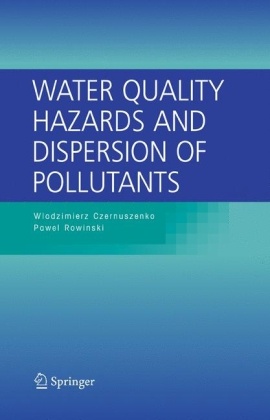Ulteriori informazioni
This book provides timely fundamental research on the impact of pollutants on water quality with a focus on the catastrophic releases of pollutants into water supplies. Twelve invited papers provide comprehensive description and analysis of the recognition, description and modeling of physical, chemical and biological processes governing the fate of pollutants in an aquatic environment.
Sommario
Mixing of solutes within meandering channels.- Water quality protection in European rivers: Relevance of physical mixing and transport processes.- Models of hyporheic contamination by non reactive solutes, metals and colloids.- Modeling the fate of pollutants into rivers with the use of commercial codes.- On the theoretical prediction of longitudinal dispersion coefficients in a compound channel.- Travel time approach to solute transport in watersheds.- On the initiation of large scale coherent motion in shallow mixing layers.- Evaluation of the observed persistence of the skewness of concentration distributions, measured in the River Rhine and its tributaries.- Moments and analytical solutions of coupled equations describing transport of pollutants in rivers.- Three-dimensional model of flow and mixing processes in open channels.- Influence of groin fields on riverine transport processes of dissolved material from accidental spills.- Three-dimensional model of flow and mixing processes in open channels.- Migration of solid particles at water surface in a compound channel.
Riassunto
Water resources are under stress worldwide and one of the elements of this stress - man's impact on water quality constitutes a key problem especially in well-developed countries. This problem receives an increasing attention of the public, politicians, decision makers nowadays. People have to answer how to achieve any given level and pattern of water quality in particular watercourses and also how to mitigate the catastrophes that are inseparable elements of civilization. The EU water framework directive, which came into force at the end of 2000, changes the way of monitoring, assessing and managing water in European countries. Three groups of quality elements (biological, hydromorphological and physico-chemical) have been identified in the water framework directive as necessary to classify the ecological status of a particular water body. There are however many significant shortfalls and gaps not only in the countries information but also at the basic understanding of the physical processes occurring in various water bodies and the presented volume aims at filling some of those gaps. One should also mention about other EU directives, like the dangerous substances directive, drinking water directive, IPCC directive which in general should lead towards reduction and elimination of pollution by hazardous substances, phasing out emissions, losses and discharges of them. In general achievement of levels protecting human health and aquatic ecosystems is expected.

